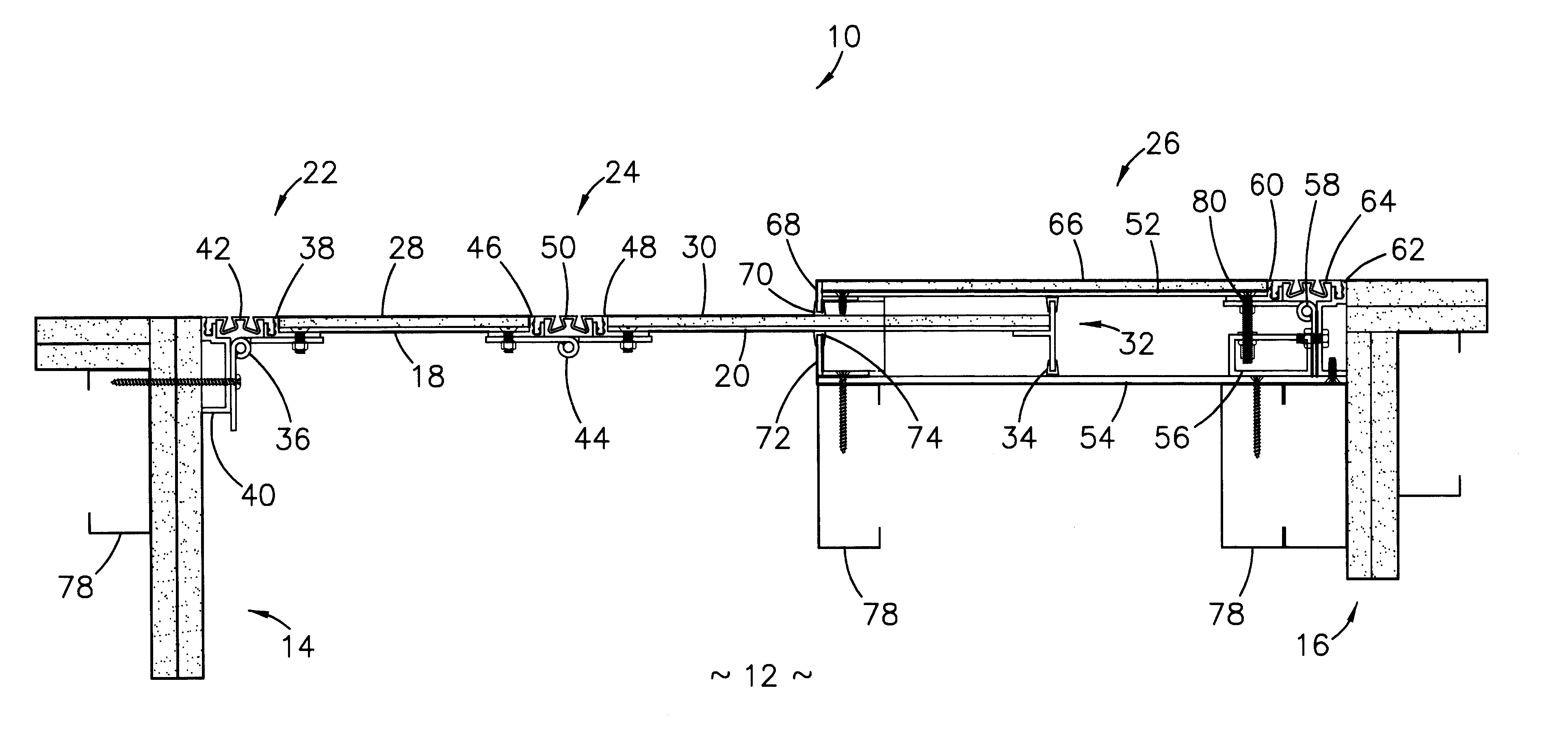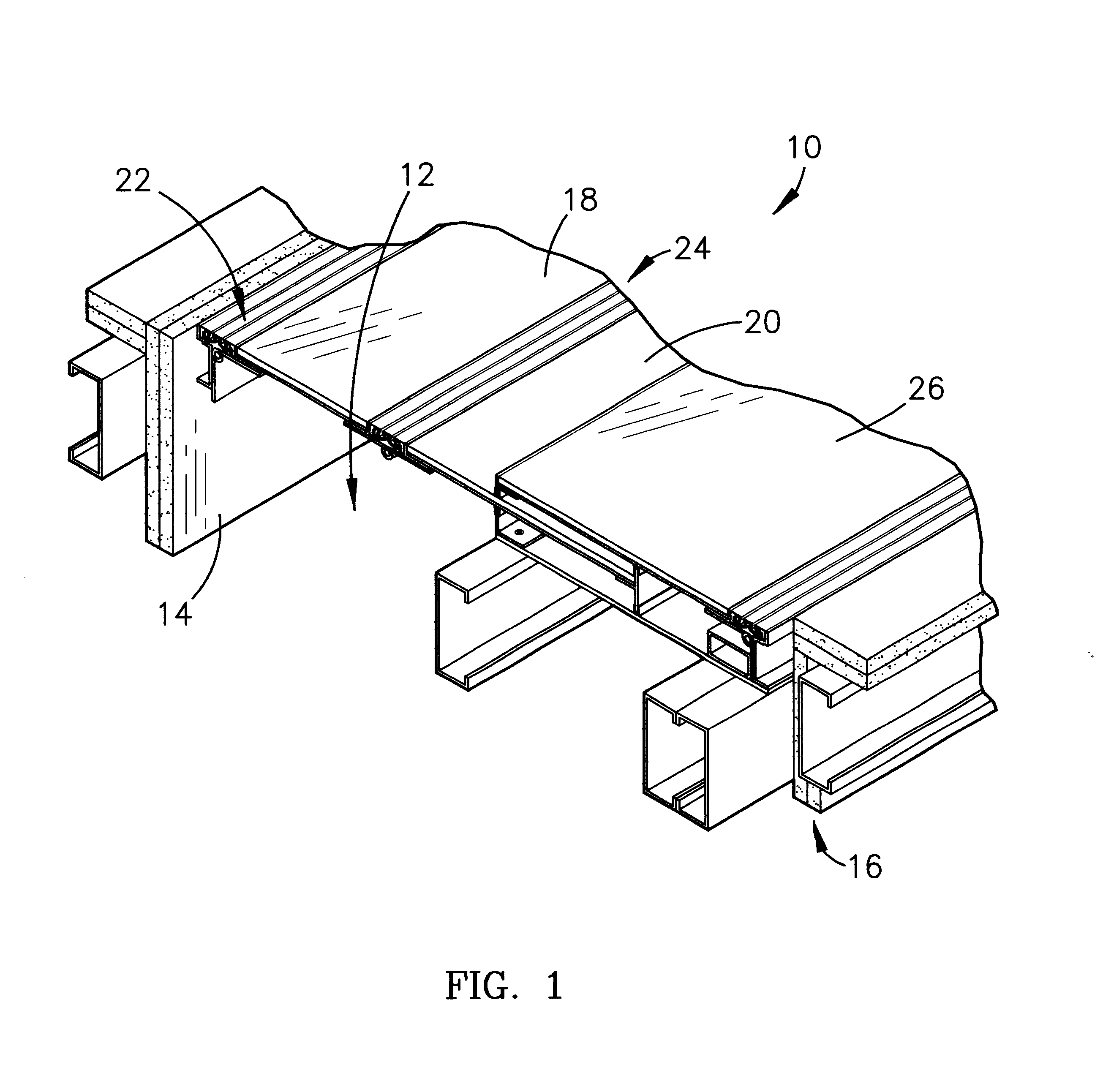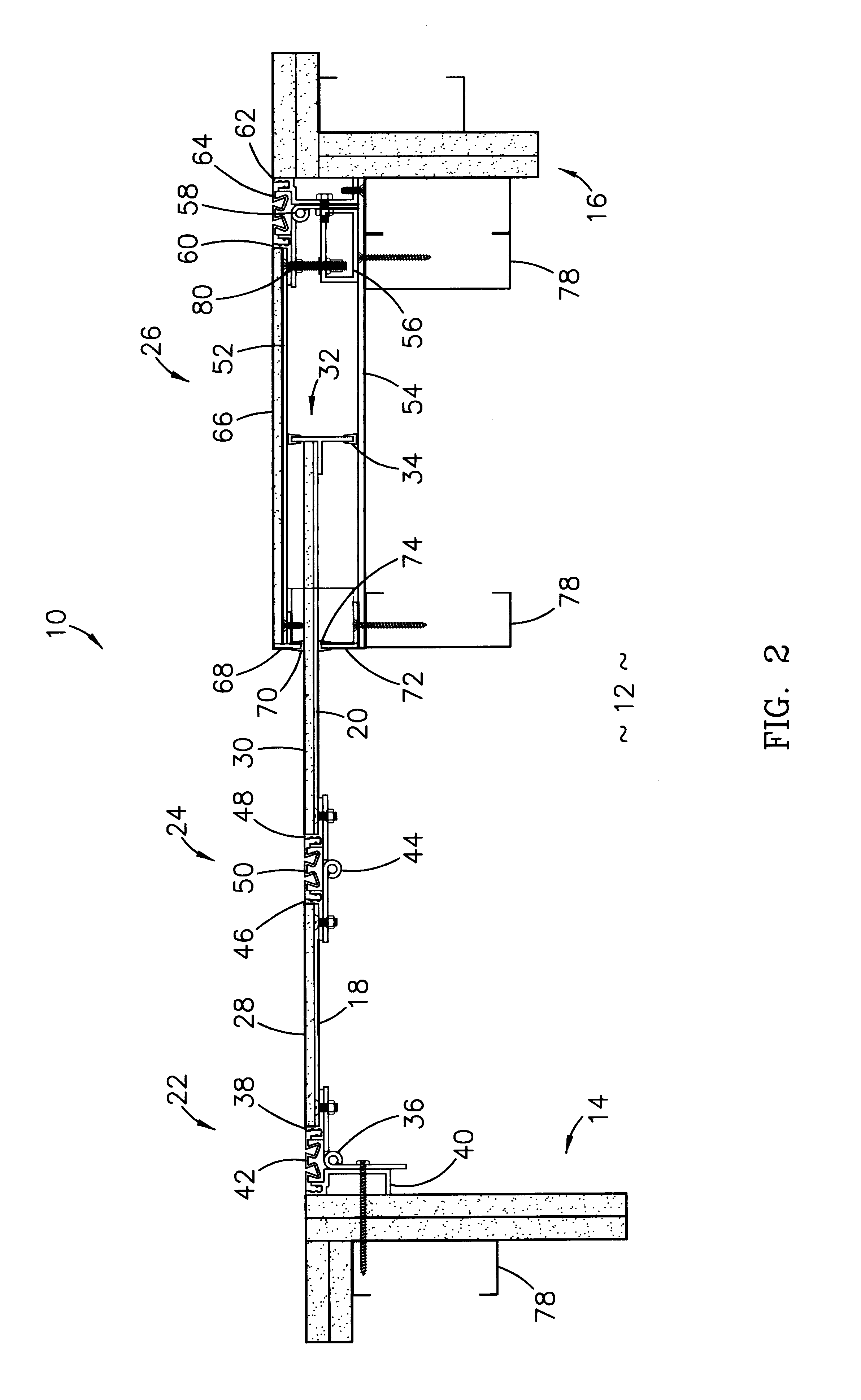Expansion joint cover
- Summary
- Abstract
- Description
- Claims
- Application Information
AI Technical Summary
Benefits of technology
Problems solved by technology
Method used
Image
Examples
Embodiment Construction
Referring to FIG. 1, an expansion joint cover 10 is shown constructed in accordance with a preferred embodiment of the present invention. The cover 10 is used to cover an expansion joint 12 between a first surface 14 and a second surface 16 of a building or other structure. The surfaces 14, 16 can have similar or different configurations and textures and may be parallel, perpendicular, or otherwise situated relative to each other.
Referring also to FIG. 2, the preferred expansion joint cover 10 broadly comprises a first plate 18, a second plate 20, a first hinge assembly 22 hingedly attaching the first plate 18 to the first surface 14, a second hinge assembly 24 hingedly attaching the first plate 18 to the second plate 20, and a housing 26 fixedly secured to the second surface 16. The first plate 18 is preferably constructed of steel, but can be constructed of any rigid material. The first plate 18 includes an exterior surface, where a facade 28 can be secured, in order to enhance ae...
PUM
 Login to View More
Login to View More Abstract
Description
Claims
Application Information
 Login to View More
Login to View More - R&D Engineer
- R&D Manager
- IP Professional
- Industry Leading Data Capabilities
- Powerful AI technology
- Patent DNA Extraction
Browse by: Latest US Patents, China's latest patents, Technical Efficacy Thesaurus, Application Domain, Technology Topic, Popular Technical Reports.
© 2024 PatSnap. All rights reserved.Legal|Privacy policy|Modern Slavery Act Transparency Statement|Sitemap|About US| Contact US: help@patsnap.com










